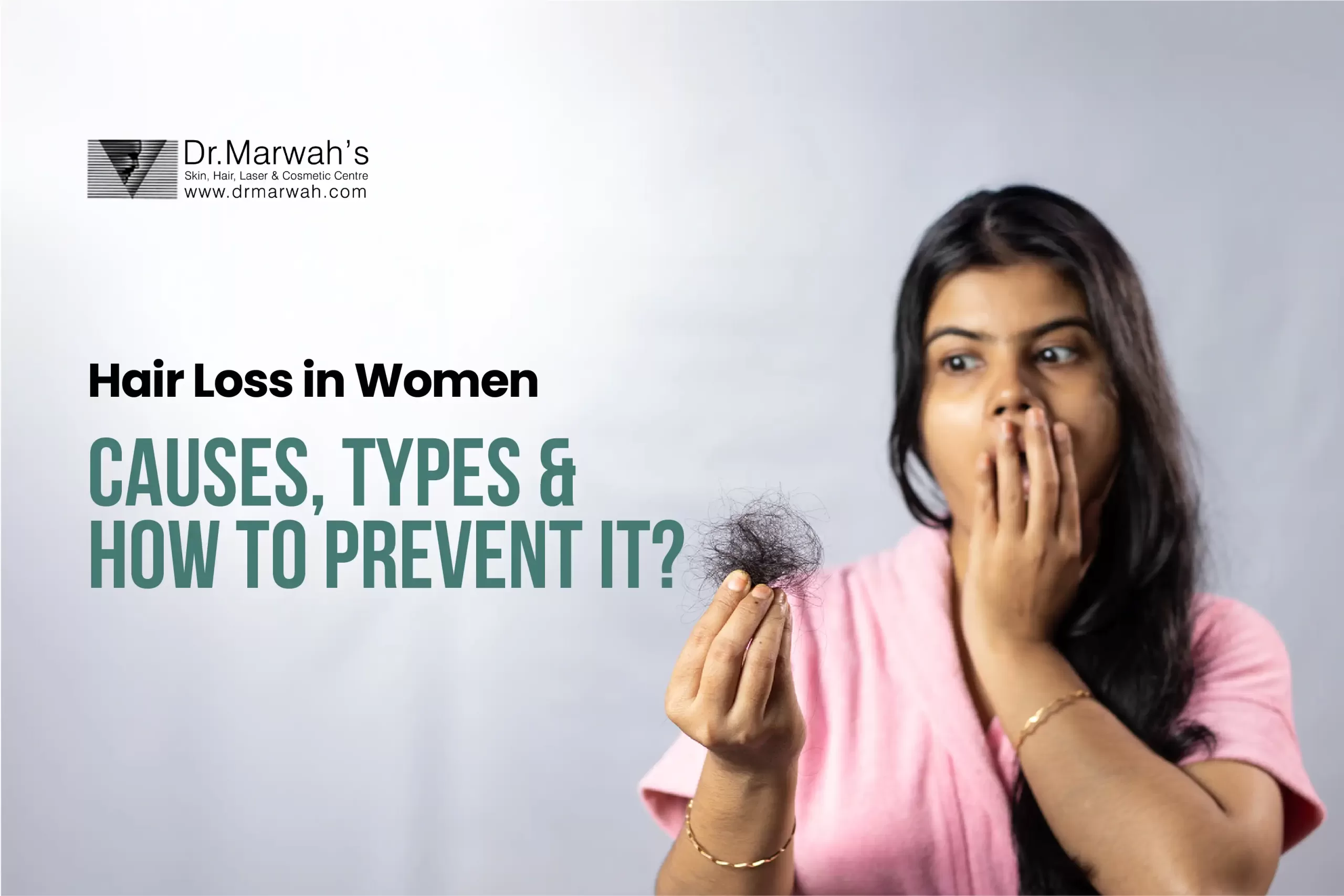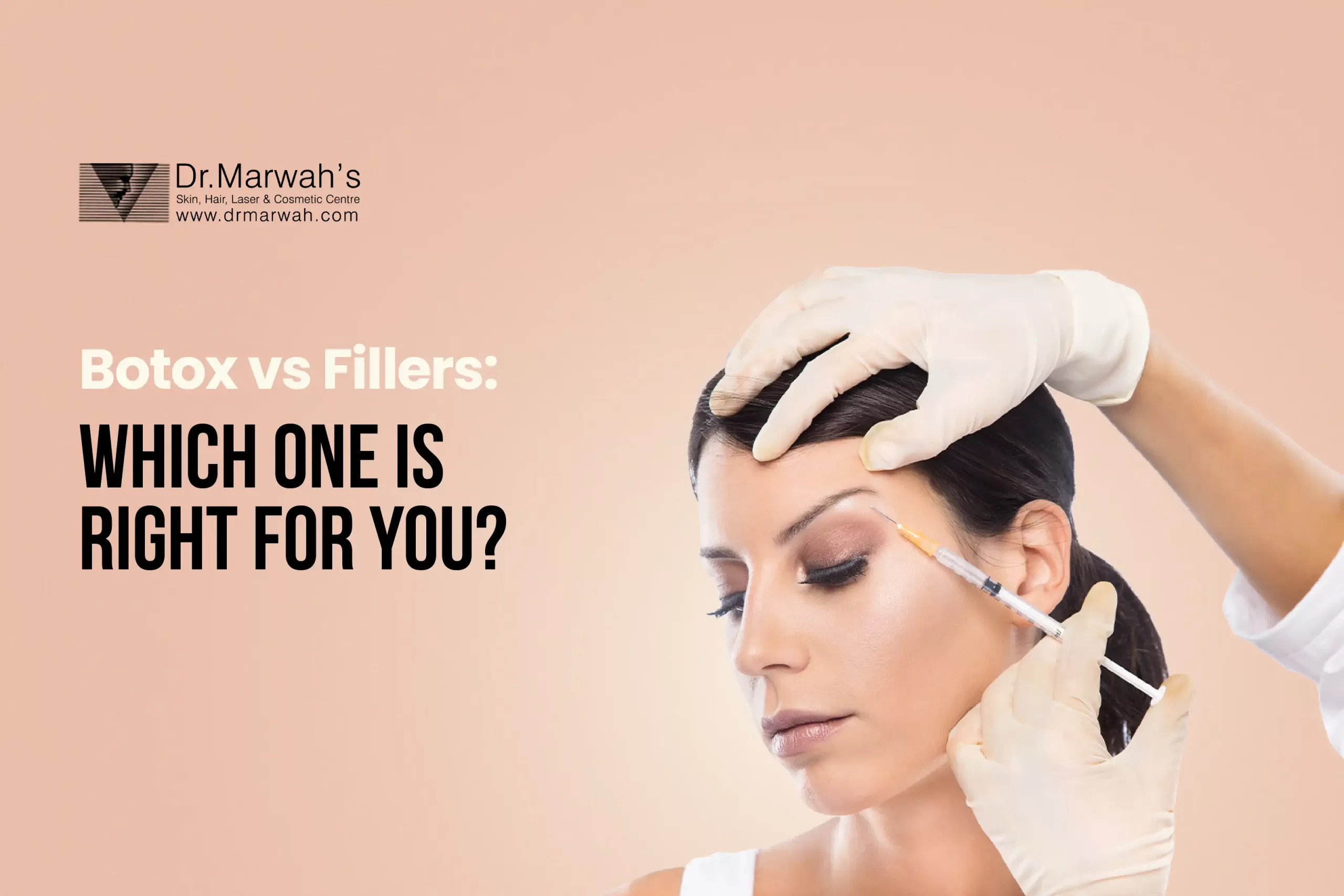Hair thinning, excessive shedding, and bald patches—they’re not just men’s issues. Hair loss in women is more common than people think and can be distressing when it strikes suddenly or persists without an apparent reason.
This guide breaks down the causes of hair loss in women, its types, effective treatments, and how to prevent hair loss in women, backed by medical expertise.
Why Is Hair Loss in Women So Common?
Unlike men, hair loss in women is often diffuse, meaning it’s spread over the entire scalp. You may not notice bald spots immediately, but your ponytail might feel thinner, or your scalp may become more visible in harsh light.
Let’s look at the primary reasons for hair loss in women:
Hormonal Imbalance
– PCOS, pregnancy, menopause, and thyroid problems
– Higher doses of androgens can cause hair follicles to shrink
Lack of Nutrients
– Low amounts of protein, iron, vitamin D, and biotin
– Poor absorption (for example, following stomach surgery) or crash diets
Stress and Sickness
– High amounts of cortisol cause telogen effluvium, which is when hair falls out temporarily
– It can also happen after surgery, an illness, or emotional trauma
Drugs
– Chemotherapy, antidepressants, and blood thinners
Style Your Hair
– Hairstyles that are too tight (traction alopecia)
– Too much heat styling, bleaching, or keratin treatments
Different Kinds of Hair Loss in Women
Knowing the different kinds of hair loss in women will help you figure out what’s wrong and what to do about it:
Telogen Effluvium
– Stress or sickness can cause sudden hair loss
– Usually goes back to normal after 3 to 6 months
Androgenetic Alopecia (Female Pattern Hair Loss)
– Thinning that gets worse with time, especially at the crown
– Genetics and hormones are to blame
Alopecia Areata
– Hair loss in patches because of an immunological response
– It can be temporary or happen again
Alopecia Traction
– Because of tight hairstyles and stress that happens over and over
– If identified early, it can be reversed
Alopecia with Scarring
– Conditions that cause inflammation on the scalp kill hair follicles
– Needs help from a dermatologist right away
People Often Don’t Realise How significant a problem hair loss is for Women
Women may not mention hair loss until they have already lost half of their hair volume. Stigma and not knowing about the illness make it harder to get treatment. However, the sooner you take action, the better the results will be.
Things to look for:
– When you shower or brush your hair, it falls out in clumps
– Widening of the portion of the scalp that can be seen
– Ponytail that is getting thinner
– Slow regeneration or hair that is missing newborn hairs
How to Help Women Who Are Losing Hair?
There is no one-size-fits-all answer. The cause, kind, and progression of hair loss determine the treatment.
Minoxidil (2–5%) for Topical Use
– FDA-approved for hair loss in women
– Stimulates follicles to encourage regrowth
Supplements for Nutrition
– Biotin, vitamin D3, vitamin B-complex, and iron
– Only if you don’t have enough
PRP Therapy (Platelet-Rich Plasma)
– Uses your blood to wake up follicles that are sleeping
– Works best for hair loss that starts early
Low-Level Laser Therapy (LLLT)
– Red light makes blood flow better in the scalp
– No pain and no need for surgery
Treatment with Hormones
– Anti-androgens like spironolactone (recommended by a doctor)
– Used when a hormonal imbalance is proven
Changes in Lifestyle
– Dealing with stress, eating meals high in protein, and neither smoking nor drinking alcohol
Learn more about Revolutionising Hair Regrowth.
How to Keep Women from Losing Their Hair
Not all hair loss can be stopped, but with the proper care, many cases can be managed:
1. Feed Yourself From the Inside
– Eat foods that are high in iron, like spinach, lentils, and seafood
– Add nuts, eggs, and berries to your diet to get vitamins that are good for your hair
2. Be Careful When Styling
– Don’t wear tight ponytails or braids
– Only straighten and blow-dry your hair once a week
3. Cleanliness of the Scalp Is Important
– Shampoos that are pH-balanced and free of sulphates are best
– To get more blood to your scalp, massage it
4. Keep Safe from the Sun and Pollution
– You can wear a cap or scarf outside
– After being around dust or chlorine, rinse your hair
5. Check Your Hormones
– This is especially true if your periods are irregular or you gain weight quickly
When to Go to the Dermatologist?
Don’t wait until your hair loss gets worse. See a dermatologist if:
– For more than three months, your hair has been falling out
– You see hairless patches
– There is a family history of baldness in women
– You’ve tried over-the-counter products and they didn’t work
Frequently Asked Questions (FAQs)
Hormonal changes, such as those resulting from PCOS, menopause, or thyroid disease, are prevalent reasons. Stress and inadequate nutrition are other significant factors.
Yes. Medications such as minoxidil, vitamins, PRP therapy, or lifestyle changes can often help prevent hair loss and even promote hair growth.
If you notice that your portion is getting wider, you’re losing more than 100 hairs a day, or you have bald spots, it’s recommended that you contact a dermatologist.
While many causes can be treated, some diseases, such as female pattern hair loss, may require ongoing care. In some cases, hair transplants can be a permanent solution.
Most women experience some effects within 3 to 4 months, but it may take 6 to 12 months for full improvement, depending on the treatment and the level of consistency.
Final Thoughts
Women who experience hair loss don’t just have a cosmetic issue; they have a medical concern. The sooner you receive aid, the easier it will be to address or resolve the problem.
An accurate diagnosis is essential, whether the problem is stress, PCOS, or inadequate nutrition. At Dr. Marwah’s clinic, we utilise the latest techniques, including PRP , LLLT, and advanced hair restoration strategies, to help women with hair loss find solutions that work for them.
📞 Call Now: +91-74004 55554
🌐 Go to: www.drmarwahclinic.com
Let us help you regain your hair and your self-esteem.
Read more blogs:
– Hair Transplant: Before, During, and After Care





